Beautiful Photo Spots in Kanazawa
Kanazawa has a number of scenic and historical photo spots that capture the beauty of its traditional architecture, natural landscapes, and cultural heritage. While the locations we highlight in this post are popular attractions rather than hidden gems, our aim is to give you a glimpse of what to expect at each spot and help you better plan your visit. We hope to provide some ideas and inspiration for those of you who enjoy travel photography like us.
Higashi Chaya District
Higashi Chaya is a preserved geisha district with traditional wooden teahouses lining narrow streets in Kanazawa. Think of it as a smaller version of Gion in Kyoto. You can capture the atmosphere of old Japan by photographing the narrow alleyways, wooden facades, and paper lanterns. Be sure to zoom in on the traditional signs, symbols and doorways.
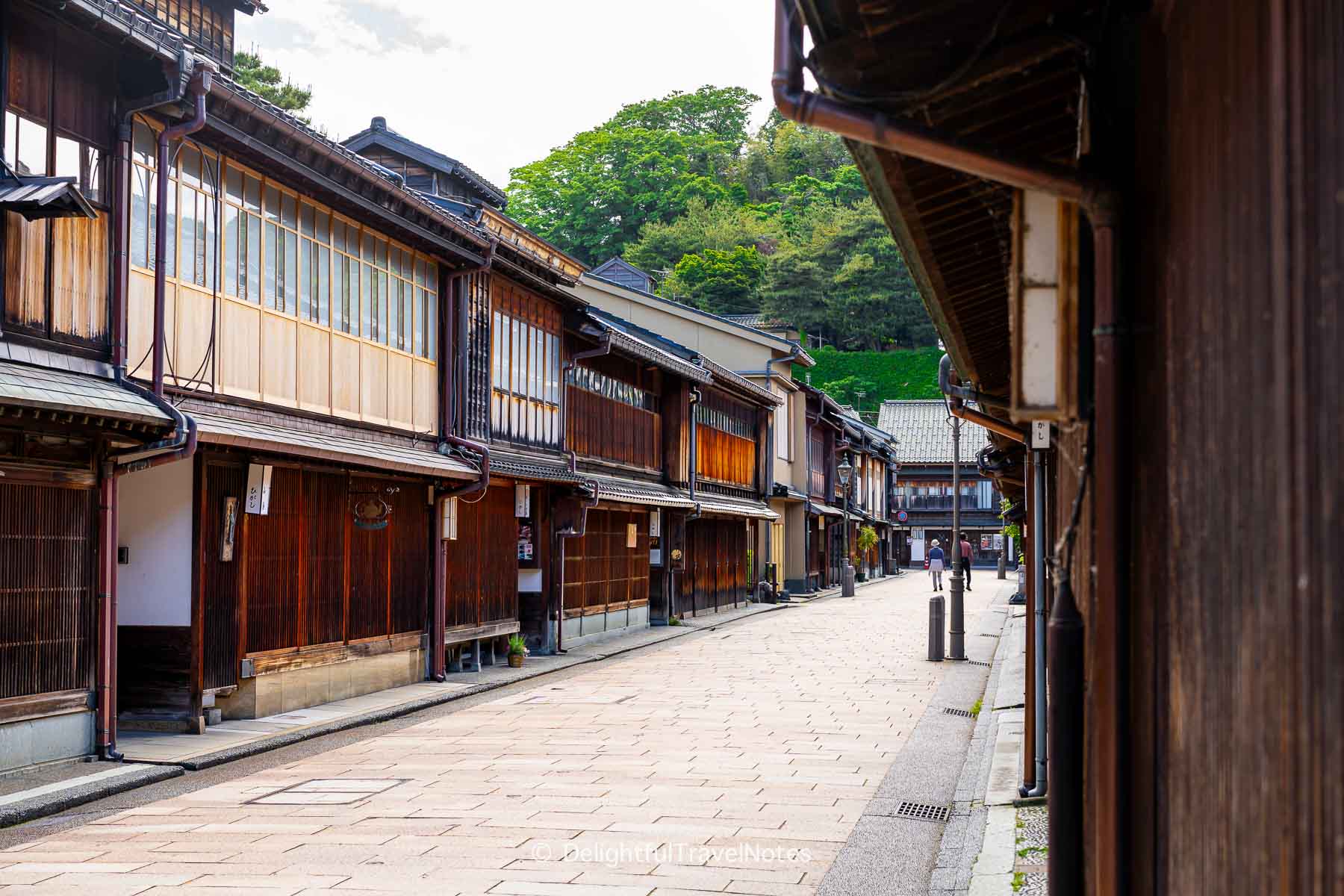
It is best to go early in the morning when the streets are more serene. The main streets of Higashi Chaya can get quite crowded, even noisy when tour groups come. Smaller side streets remain fairly quiet throughout the day.
While Higashi Chaya is picturesque, I find the area a bit small, with many shops catering to tourists selling similar souvenirs. I recommend approaching the district by crossing the Ume Bridge as you can take some nice photos on this bridge. From there, wander through the main streets and explore the side alleys to uncover the quieter spots of Higashi Chaya.

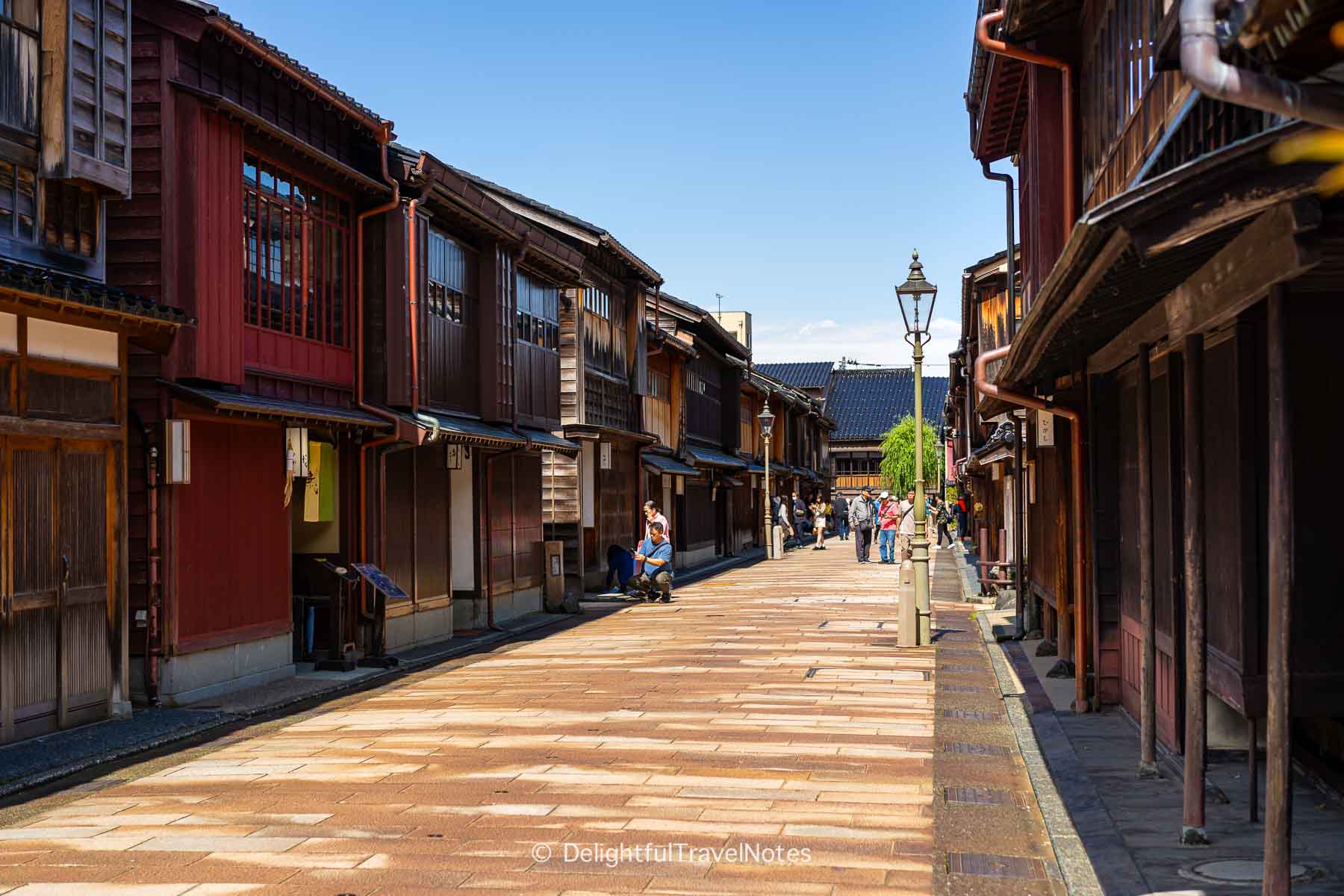
Kazuemachi Chaya District
Across the Asano River from the popular Higashi Chaya District lies the quieter Kazuemachi Chaya District. This spot is home to a number of local restaurants, bars and guesthouses. We were told that Kazuemachi would be more lively at night but we enjoyed how peaceful it was during the day. For photography, be sure to capture the preserved wooden facades along the riverbank and the charming, narrow alleyways that give the area its timeless appeal.
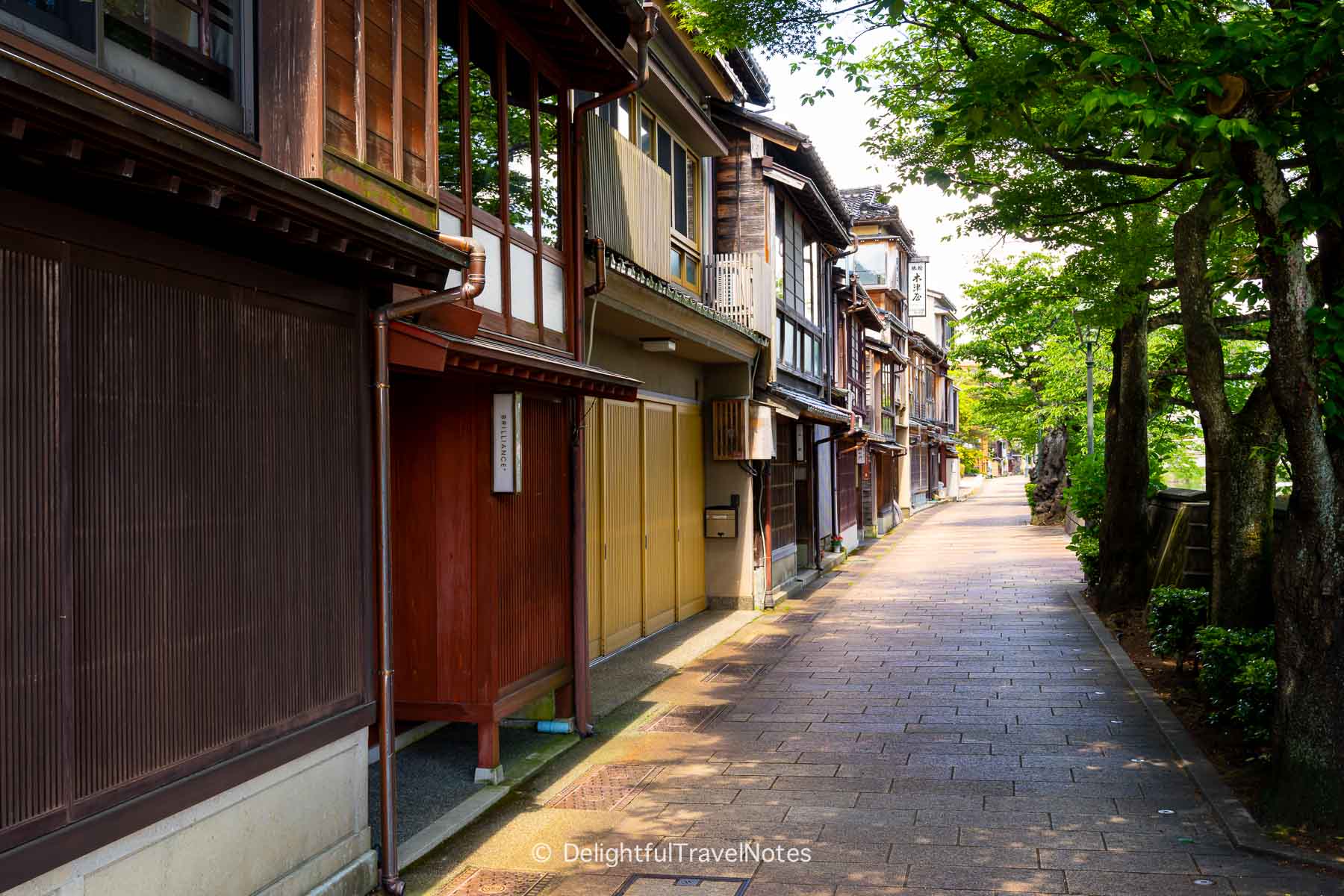
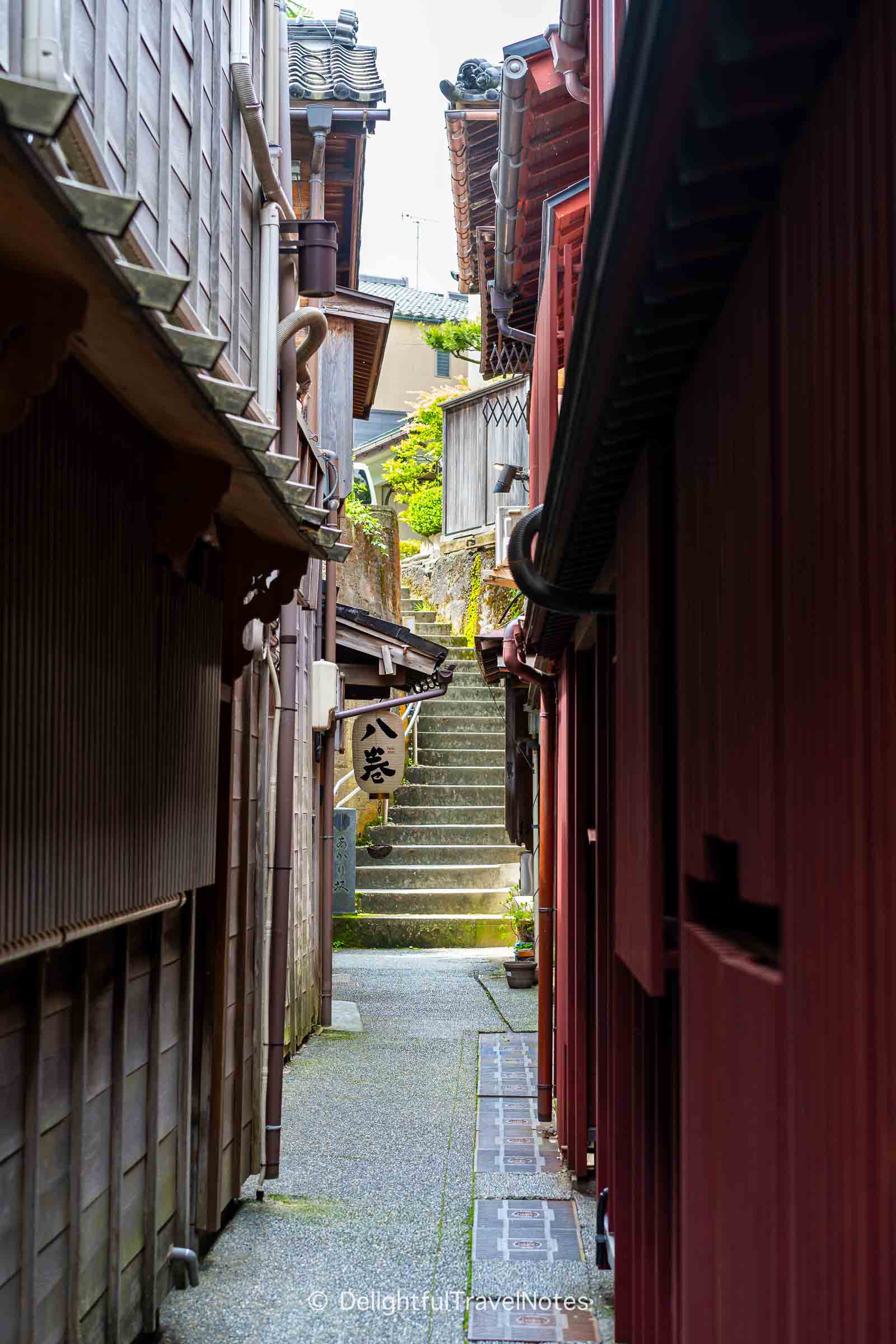
Oyama Shrine
Oyama Shrine turned out to be a pleasant surprise for us, as we ended up enjoying the site more than we expected. Its unusual gate, which mixes Japanese, Chinese, and European styles, is a unique photo subject. In addition, the tranquil grounds and the adjacent Japanese garden and pond are great for taking photos. This shrine is perhaps our most favorite photo spot in Kanazawa.
We got some lovely photos of us sitting on this stone bench with the garden in the background. We also helped taking photos for another couple and two friendly Japanese elderly ladies at this same spot. It is such a peaceful place to relax and take in the scenery.


I particularly like this photo of the large stone torii framing the entrance, drawing the eye upward toward the multi-tiered gate behind it. The main gate behind combines Asian and Western architectural elements. Whether it’s beautiful or not is up to each person’s taste, but I do find it quite unique.
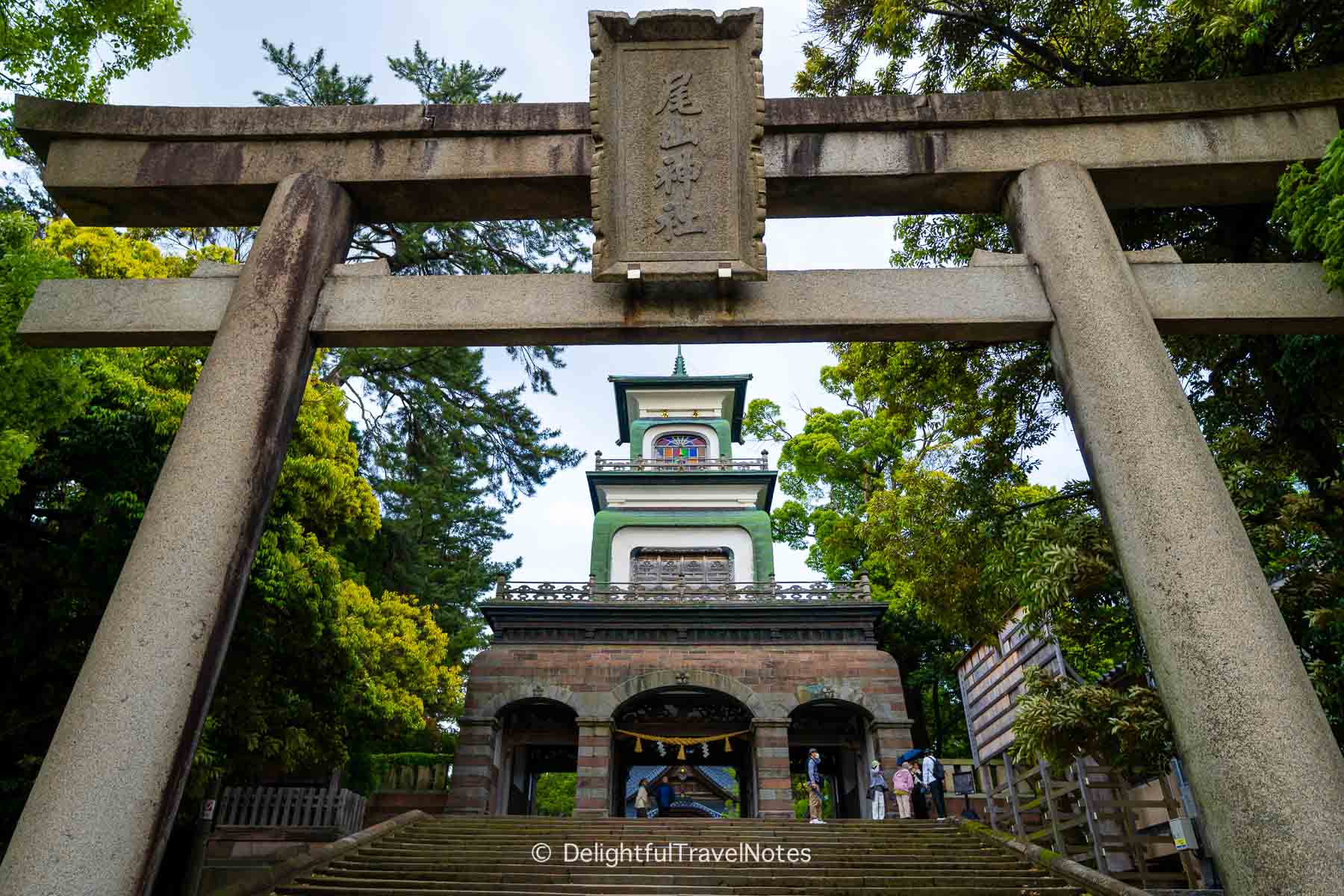
There are generally no strict rules when visiting temples or shrines in Japan. Here’s some common etiquette to follow in my opinion. Also note that there’s a goshuin counter at Oyama Shrine and they closed at 5 pm when we were there.
Kenroku-en Garden
Each season will give you different color palettes at Kenroku-en Garden, one of the most beautiful gardens in Japan. Our visit was in May so everything was lush and green but I imagine it should be even more stunning during spring with cherry blossoms and fall with vibrant foliage.
The Kotojitoro Lantern is a popular photo subject in the garden, and depending on the time of day, it can be tricky to capture a shot without people in the frame. I think I had just a few seconds to snap a photo with no one in it. The soft curve of the lantern and the bridge below it add an elegant touch to the tranquil pond scene, surrounded by lush greenery.
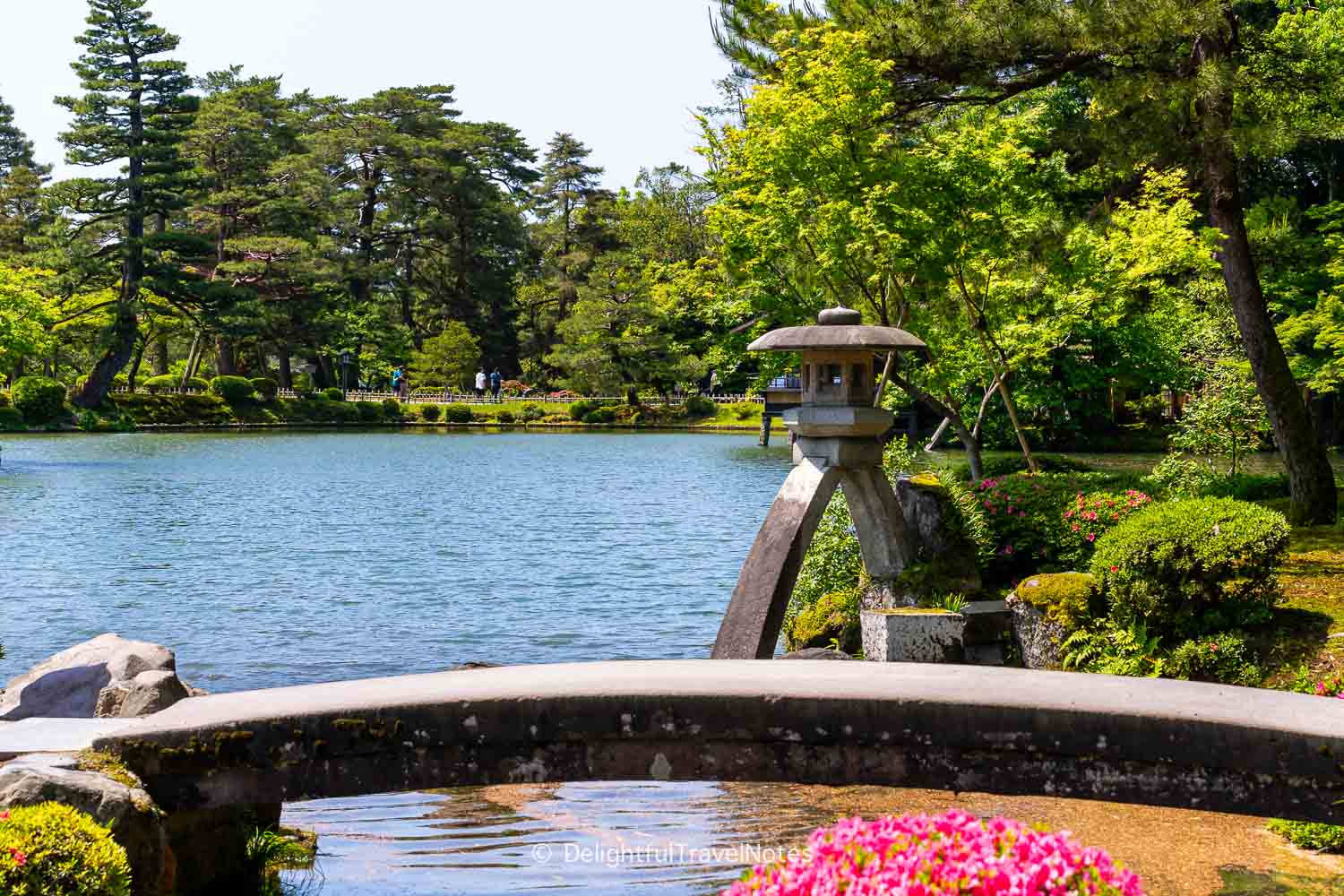
Besides the lantern, there are plenty of other beautiful scenes to photograph, including seasonal flowers and the impressive pine trees that dominate the grounds. Kenrokuen Garden was more crowded than we thought so you may want to get there early. The tickets allow same-day re-entries. I just wish there were a bit more benches around for visitors to sit and enjoy the scenery.
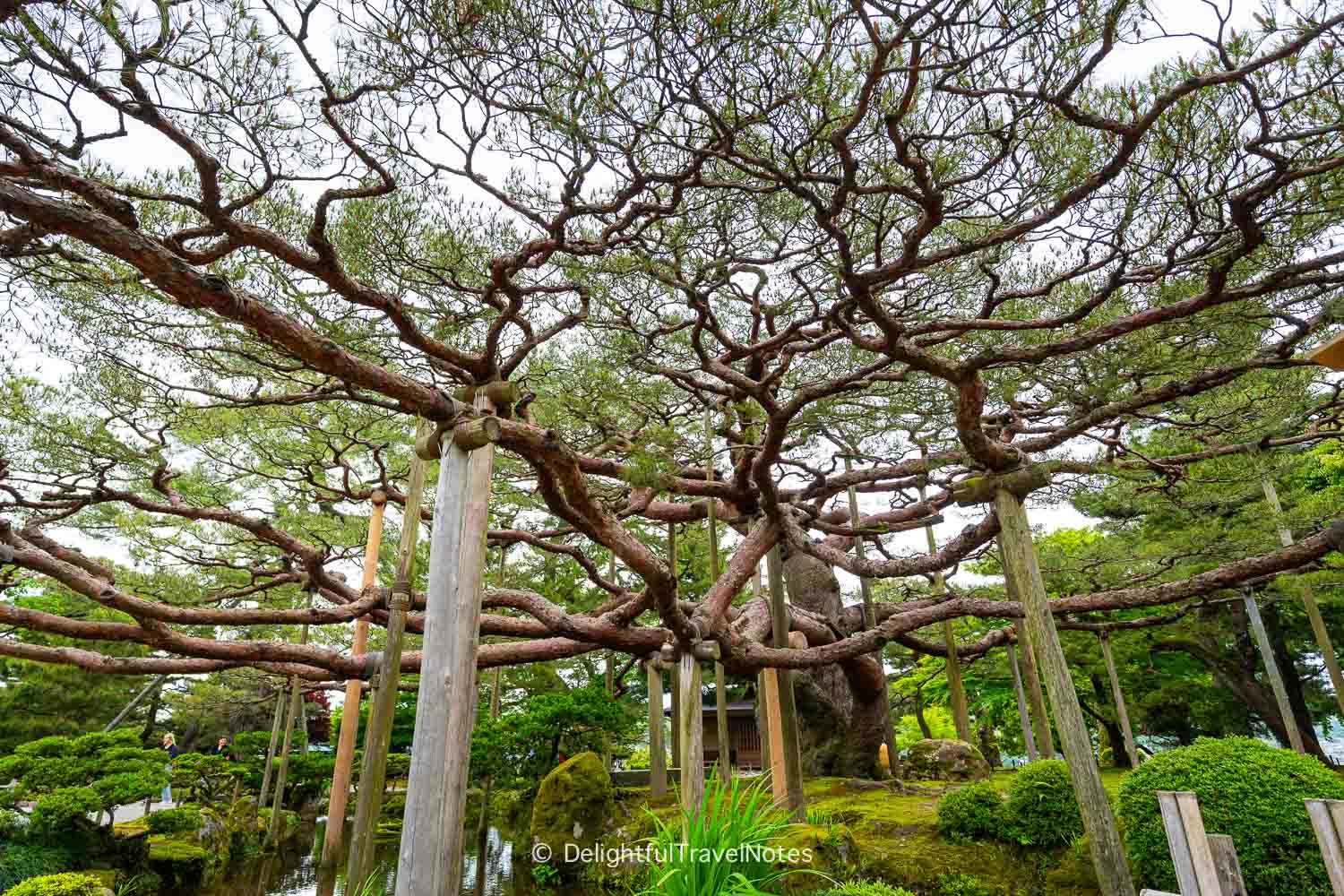
D.T. Suzuki Museum
Dedicated to the famous Zen philosopher, D.T. Suzuki Museum has some photogenic opportunities for those who like minimalist architecture and tranquil scenery. However, if you are not familiar with D.T. Suzuki’s work or not into Zen philosophy, this place may feel underwhelming to you. There’s actually little information inside and very few exhibits. I feel like it’s more of a place for quiet contemplation than a traditional museum experience.
The highlight of the museum is the reflecting pool, where you can capture minimalist architecture and peaceful settings. This pool can be photographed at different angles, one of which is from the side of the pool, along a path that is free to access without entering the museum itself.
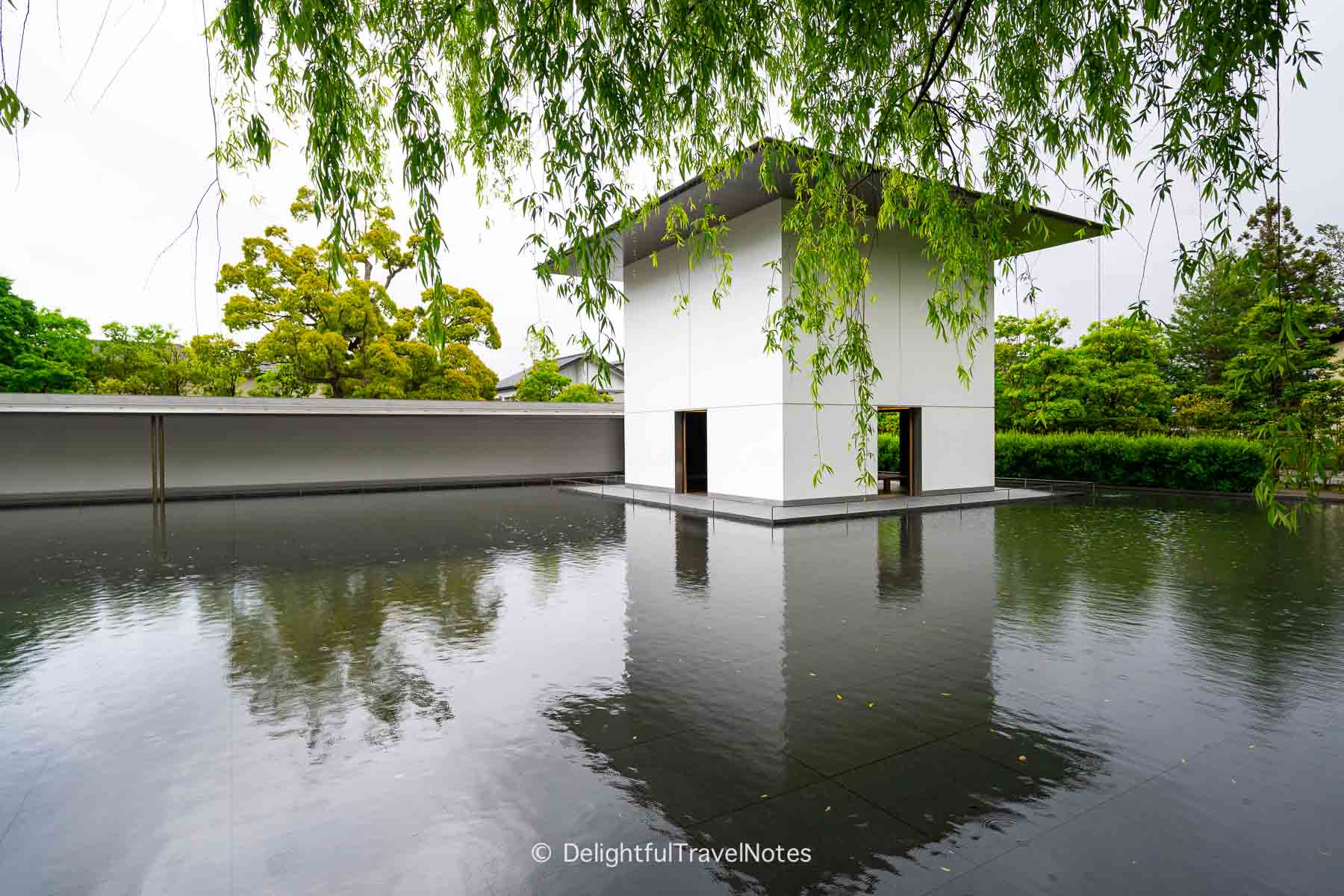
Omicho Market
Omicho Market is a great place to visit if you are interested in street photography. As mentioned in my previous post about local foods to try in Kanazawa, this market is lively yet not overcrowded or touristy like Tsukiji Market in Tokyo. You can capture dynamic shots of fresh seafood, produce, and the local food culture here.
Some vendors close their shops in the early afternoon, so it may be a good idea to come here in the morning when the market is most active. Be respectful of vendors when taking photos. We saw some shops having signs that say “No Photos”. Lastly, don’t forget to sample some food while exploring the market.
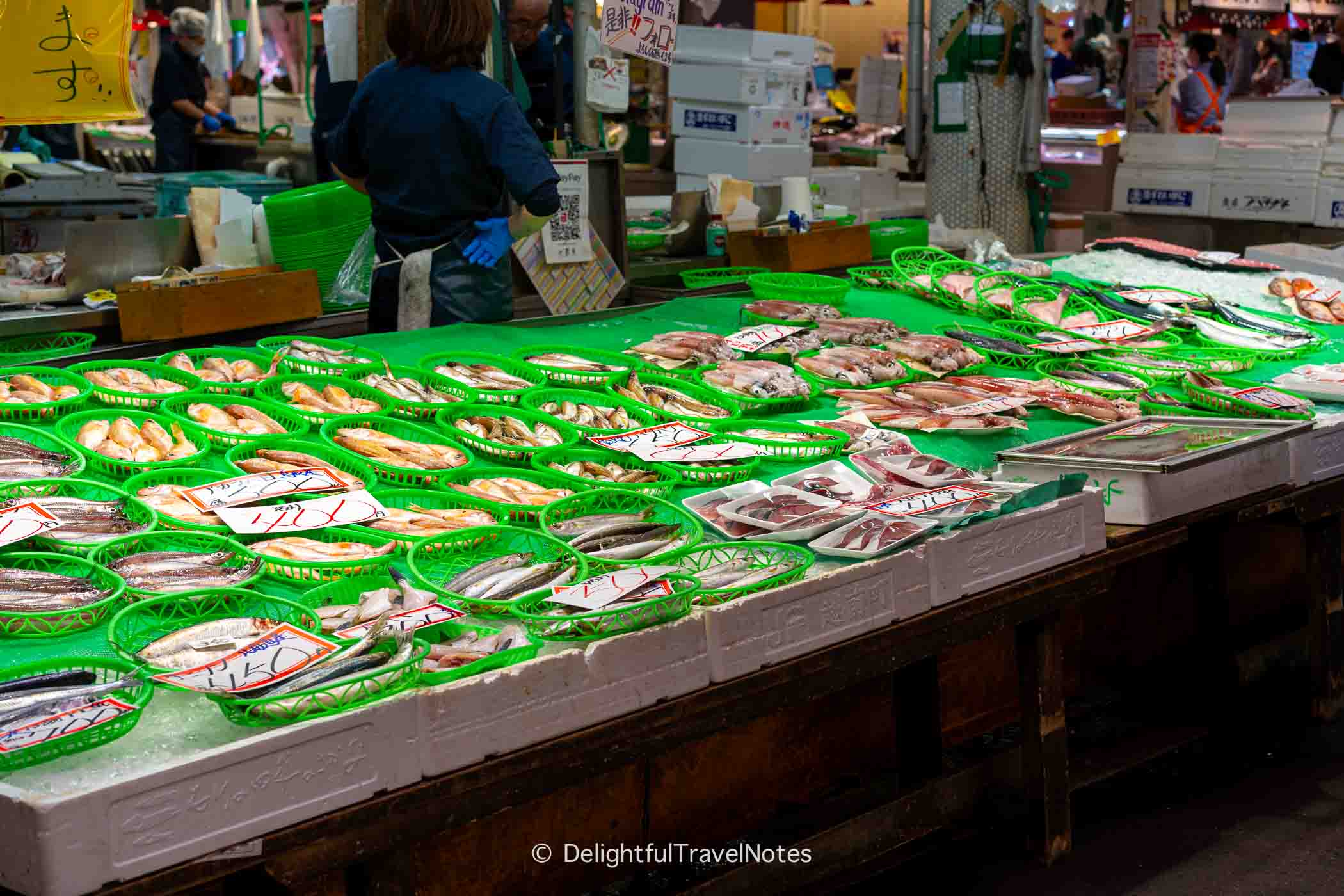
Final Thoughts
Overall, Kanazawa is a photogenic city with a laid back atmosphere. The main attractions are fairly close to each other and some of them are relatively small, so you can see quite a lot within just 2-3 days in Kanazawa.
We took the opportunity to hire a photographer for a morning session as we wanted photos of both of us together in Japan, beyond just our typical scenery shots or one of us at a time. It was a fun way to capture memories and here’s the photographer we booked via Viator. The weather wasn’t great but he managed to take some pretty nice photos for us. Alternatively, you can also do a walking tour with a local guide to learn more about Kanazawa.
I recommend staying in a central location near Kenrokuen Garden for easy access to the city’s key sites. We were satisfied with our stay at the Hotel Sanraku Kanazawa and would not hesitate to stay again. The breakfast buffet spread is huge – see my review for more insights.
The Hotel Sanraku Kanazawa
Booking.com Agoda.com


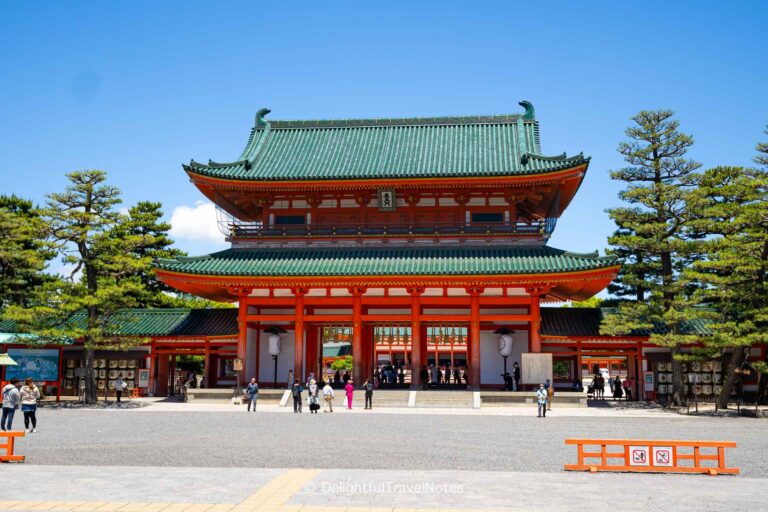
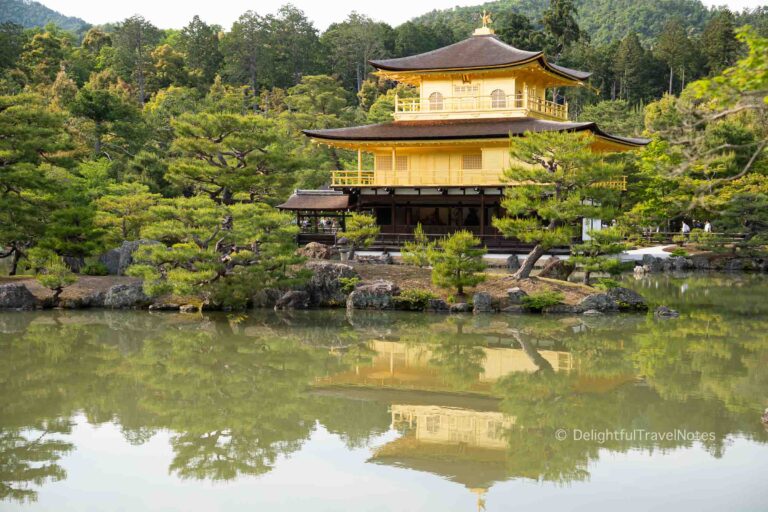
Would you recommend Kyoto or Kanazawa? I hope to visit Japan for the first time in late May or late November 2025. I have always wanted to visit Kyoto but I dislike crowds. There seems to be enough to see and do in Kanazawa in 3 or 4 days but I worry I will regret not going to Kyoto instead.
Hi Diane,
On our most recent three trips, we always stopped by Kyoto for 2-4 days. I guess that speaks to how much we like Kyoto. We enjoyed Kanazawa too, but it can’t compare to Kyoto in our opinion. Kanazawa is cute but Kyoto is great, and there are a lot more to see in Kyoto. I know fast pace travelers can see everything in Kanazawa in 2 days. We are slow pace people so we spent 3 days.
If it’s your first trip and you’re not sure when you can return to Japan, plus you’ve always wanted to visit Kyoto, then I think you should go to Kyoto. I dislike crowds too, yet I sometimes feel like people exaggerate the crowds situation a little bit. Just the top 5-6 sites and the buses are crowded in Kyoto.
I don’t know about your plan or your travel preferences, so I can only speak about our experience. There are plenty of beautiful places with very few people in Kyoto. You can check my Kyoto category for more ideas, or read this one and this one about planning a trip to Kyoto and avoiding crowds. We only take the trains/subways and taxis and avoid the buses. Nara is also a great place to stay overnight and it’s very quiet in the evening and early morning. Shiga is a great day-trip option from Kyoto if you are sick of the crowds.
We have been to Kyoto in both May and November and visited Kanazawa in May. Pleasant weather both months (more chance of rain in May though) and needless to say, November is more crowded but the fall scenery is quite a lot more beautiful. I’ve been writing posts about beautiful fall spots in Kyoto and mention the crowd levels at each spot. Feel free to let me know if you have further questions.
Thanks for the detailed info, Sophie! It’s very helpful. I will check out the links. I can tell you do a lot of research before your trips. I love your photos especially of Utah landcapes. Thanks for sharing your memories and tips with us.